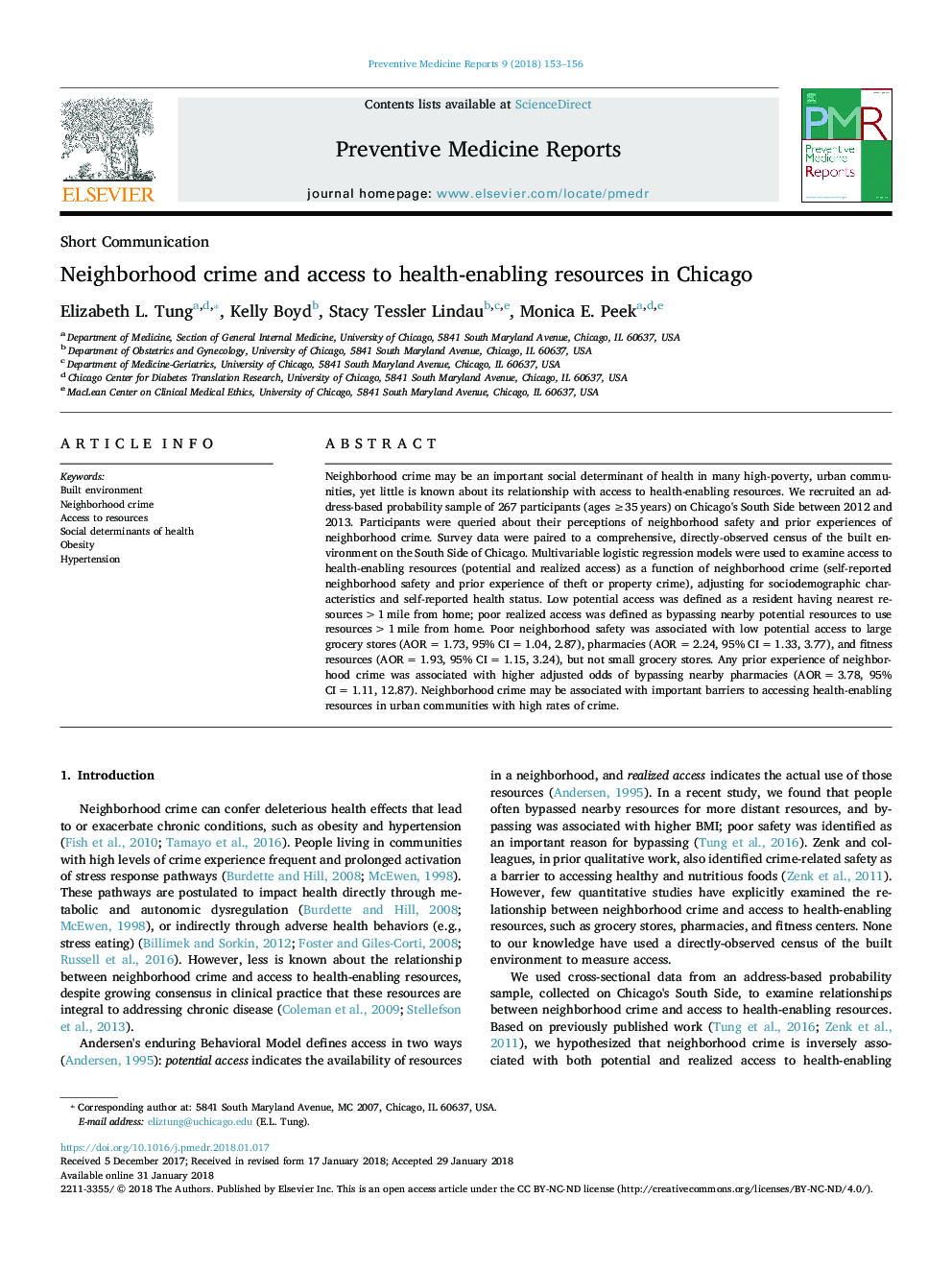| Article ID | Journal | Published Year | Pages | File Type |
|---|---|---|---|---|
| 8818692 | Preventive Medicine Reports | 2018 | 4 Pages |
Abstract
Neighborhood crime may be an important social determinant of health in many high-poverty, urban communities, yet little is known about its relationship with access to health-enabling resources. We recruited an address-based probability sample of 267 participants (ages â¥35â¯years) on Chicago's South Side between 2012 and 2013. Participants were queried about their perceptions of neighborhood safety and prior experiences of neighborhood crime. Survey data were paired to a comprehensive, directly-observed census of the built environment on the South Side of Chicago. Multivariable logistic regression models were used to examine access to health-enabling resources (potential and realized access) as a function of neighborhood crime (self-reported neighborhood safety and prior experience of theft or property crime), adjusting for sociodemographic characteristics and self-reported health status. Low potential access was defined as a resident having nearest resources >1â¯mile from home; poor realized access was defined as bypassing nearby potential resources to use resources >1â¯mile from home. Poor neighborhood safety was associated with low potential access to large grocery stores (AORâ¯=â¯1.73, 95% CIâ¯=â¯1.04, 2.87), pharmacies (AORâ¯=â¯2.24, 95% CIâ¯=â¯1.33, 3.77), and fitness resources (AORâ¯=â¯1.93, 95% CIâ¯=â¯1.15, 3.24), but not small grocery stores. Any prior experience of neighborhood crime was associated with higher adjusted odds of bypassing nearby pharmacies (AORâ¯=â¯3.78, 95% CIâ¯=â¯1.11, 12.87). Neighborhood crime may be associated with important barriers to accessing health-enabling resources in urban communities with high rates of crime.
Keywords
Related Topics
Health Sciences
Medicine and Dentistry
Public Health and Health Policy
Authors
Elizabeth L. Tung, Kelly Boyd, Stacy Tessler Lindau, Monica E. Peek,
